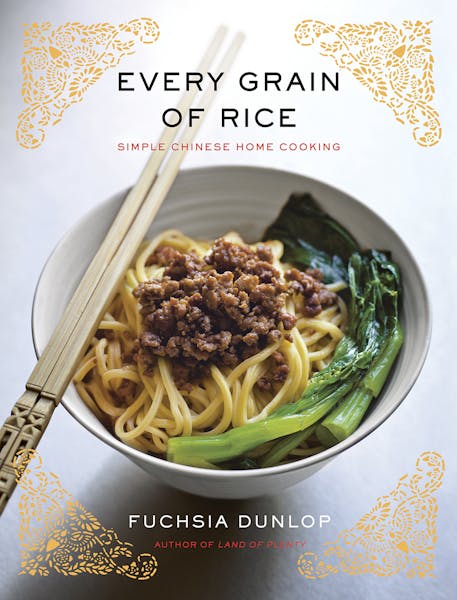Ladies and gentlemen, start your woks. Midnight tonight (Jan. 30) marks the beginning of the Chinese New Year. Specifically, the Year of the Horse: predicted to bring fast victories, unexpected adventure and surprising romance.
In China, the New Year means 15 days of celebration, reunion, remembrance and, of course, ritual eating — a feast for the eyes, the soul and the stomach. It's also known as the Spring Festival, a particularly appealing notion given the biting temperatures on this side of the globe.
For delicious ways to serve up the occasion, we turned to the author of the new "Every Grain of Rice," Fuchsia Dunlop, an expert on Chinese food. She was the first Westerner to train at the Sichuan Institute of Higher Cuisine, and has spent nearly two decades researching Chinese food and culture. Her most recent book reflects the simple, but utterly delicious approach to food that's the hallmark of Chinese home cooking.
We caught up with her, via Skype, at her home in London:
Q: Fuchsia, your book makes the point that the key to Chinese dining is variety and lots of shared dishes — part of the joy is dipping into a bit of this and a bit of that. Initially, it felt daunting to create so many dishes. But you opened my eyes to techniques that make it possible for the average cook to put on a dinner that feels like a banquet.
A: The rule of thumb is to make one dish per person. But when you arrive at a Chinese home, you'll generally find several dishes already laid out on the table. There are all these lovely, salad-type dishes served at room temperature. Lots of dressed vegetables, but cold dressed meats, as well. And there are beautiful braises, such as red braised pork, that taste even better if you've made them the day before and then reheated them. Do some things like that, and, you know, three-quarters of the meal is taken care of before guests even arrive.
Q: Those dishes were a revelation to me. When most of us think Chinese, we jump to stir-fry, which comes together quickly, but takes lots of last-minute focus. Juggling more than one wok at a time leaves me in a panic.
A: Well, stir-fries do account for a large part of the repertoire, and sometimes I'll go crazy and spend the whole evening doing one stir-fry after another. But on those nights, I don't see much of my guests. You could think in terms of doing just a single stir-fry, alongside dishes you prep ahead, and of course, enough rice for everyone at the table to have their fill. In China, there's generally a soup, too, but often a very simple one, which you can prep in advance.
Q: Any particularly auspicious foods that appear at Chinese New Year?
A: Fish is considered lucky. The word for "fish" is pronounced just like the word for "surplus." A popular New Year's phrase, nian nian you yu, means both "have a fish every year" and "every year, have a surplus."
Rural families will generally have butchered a pig, so pork shows up a lot. The traditional diet is largely vegetarian, but at New Year's they eat as much meat as they can afford.
Dumplings can be wrapped to resemble gold ingots, and are supposed to bring wealth. Some families hide a coin in one of the dumplings; getting that dumpling is extra lucky. Another type of dumpling — a sort of round glutinous ball — symbolizes reunion and is eaten at the end of the 15-day celebration. There are bowls of sweets and Mandarin oranges. And if you have guests who want a baby, you might set out bowls of seeds or nuts for them to nibble. They're supposed to promote fertility.
Q: It occurs to me that if time is limited, you might look to Asian grocers to help you make the meal more extensive. As in, you could cheat a bit by buying frozen dumplings or buns that you fry or steam at home. Also, the photo of the "thousand-year" egg in your book sent me off to buy some.
A: Certainly. Many Asian stores offer whole barbecue duck, for example. You might find New Year's Cake, made with sticky rice. Also, don't overlook the party décor. I once bought a huge red paper dragon to hang over the table. Pretty festive.
Q: What else plays into the celebration?
A: The color red is everywhere. Red invites good and fends off evil. Couplets are written on red paper and hung in doors and windows. Elders give children red packets of coins. And firecrackers — the noise is supposed to scare demons away.
Q: And how do you say Happy New Year's in Chinese?
A: Xin nian kuai le! It's pronounced like shin nee-en kweye ler (kweye as in "eye").
Q: Oooooh. That's tough. I think I'll stick to cooking.
Jo Marshall is a Minneapolis ad writer with a passion for travel, food and culture.
ABBA, Blondie, and the Notorious B.I.G. enter the National Recording Registry

